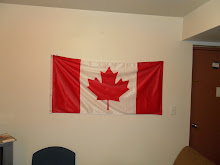By definition, for a market to be an oligopoly there are certain criteria that must be met. For instance: there must be a small
 number of firms, interdependency between the firms, a slight differentiation in the product or service, firms must be large and extremely powerful that create large barriers to entry.
number of firms, interdependency between the firms, a slight differentiation in the product or service, firms must be large and extremely powerful that create large barriers to entry.Oligopoly differs from the others simply due to the number of firms with in the industry. Monopolies have only ONE large firm controlling the entire industry with large barriers to entry. Meanwhile, monopolistic competition and perfect competition have many smaller firms in the industry with very small barriers to entry. An oligopoly is almost a cross between Monopoly and Monopolistic Competition.
Why the worry about them? Oligopolies are nefarious for collusion. With such small numbers with in the industry, they tend to price their products so that it’s beneficial to all the companies within the market. This creates price fixing, which basically means that consumers end up paying the same thing for similar products no matter where they go and for the most part, consumers end up paying more then a product is worth due to this price fixing, seeing they have no other alternative.
Also, both monopolies and oligopolies defy capitalism, which i
 s what North America is known for, although Canada is less so then U.S. However, governments try there hardest to either get rid of this power hungry market types, or at least heavily regulate them so that prices do not get too out of control.
s what North America is known for, although Canada is less so then U.S. However, governments try there hardest to either get rid of this power hungry market types, or at least heavily regulate them so that prices do not get too out of control.Oligopolies still exist, despite the governments attempts to turn them into monopolistic competition. In fact, many times governments will only succeed at changing monopolies into oligopolies. As in the case of the Canadian Railway.
Oligopolies are an interesting market to look into, and in the case of the Canadian Railway, it’s a captivating topic to investigate.

No comments:
Post a Comment